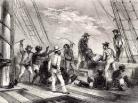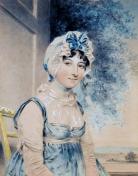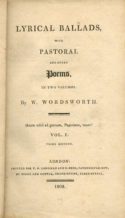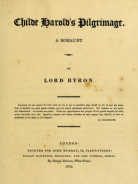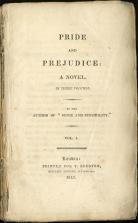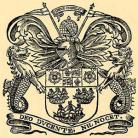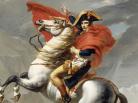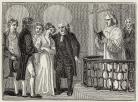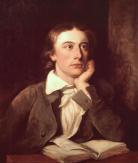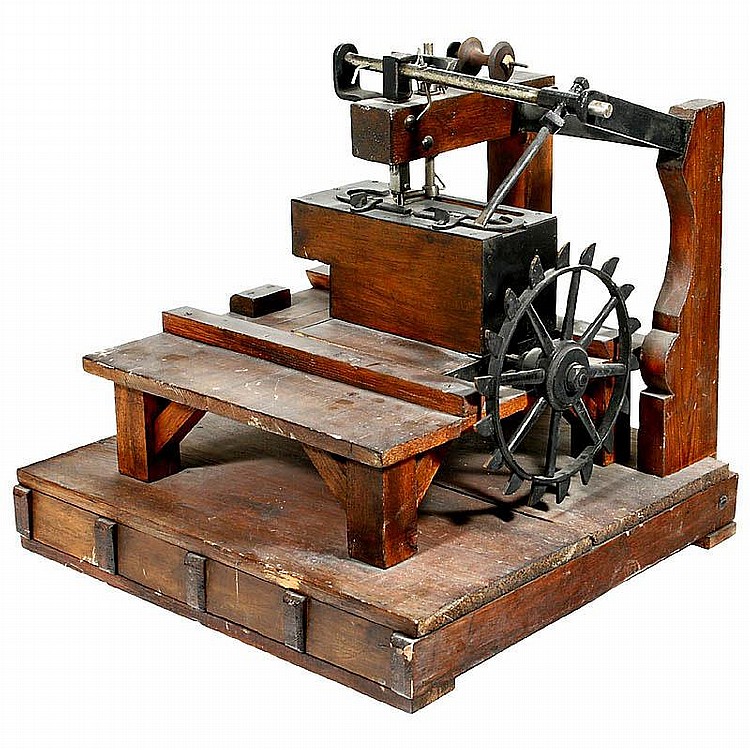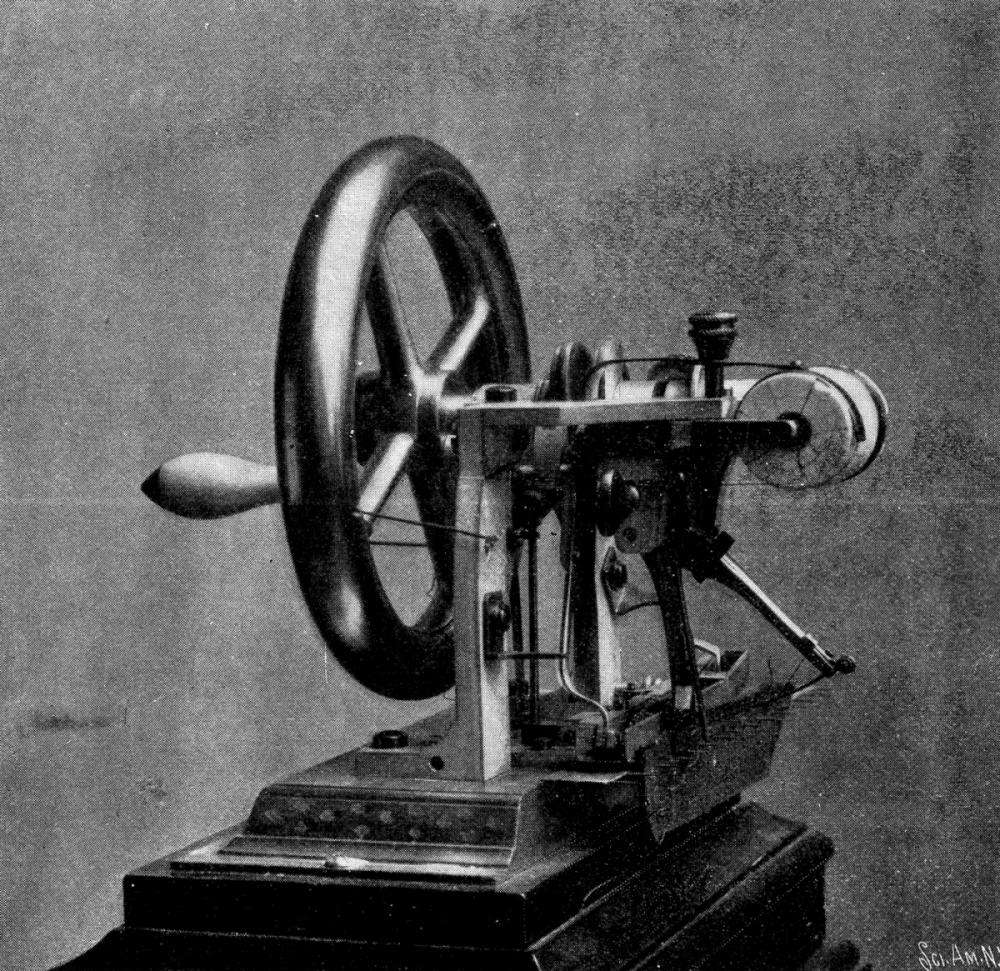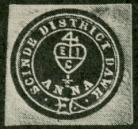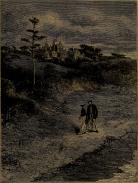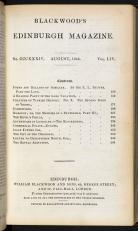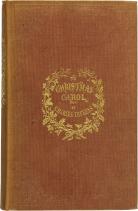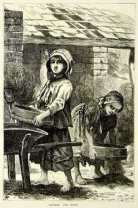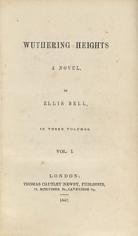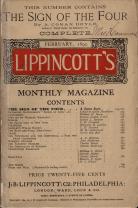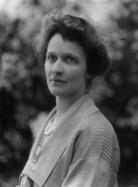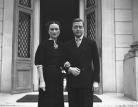Plotting British Literature, 1800-Present
Created by Ashley Nadeau on Tue, 07/20/2021 - 15:41
Part of Group:
We'll use this timeline to plot the relationship between our course texts and historical events. At three different points during the semester (after each of our major units: Romantics, Victorians, and Moderns), you'll be asked to contribute an event to this timeline. Your contribution should provide a brief overview of a significant and interesting cultural or political event, as well as a brief reflection that connects that event to our course themes and texts.
Each contribution should be approximately 300-500 words (think 2-3 meaty paragraphs). You should consult academic sources to write your event overview; however, you must cite your sources and the language of your posts must be your own. In addition to providing a works cited list at the end of your event overview and reflection ("Description"), you should also aim to provide accurate event dates or date ranges, a location tag (when appropriate), and an image to illustrate your event on the timeline. Images must be in the public domain.
To get this timeline started, I've already plotted the publication dates of our course texts. Your job will be to contextualize these texts and explore the cultural and societal histories that informed them.
Timeline
Chronological table
| Date | Event | Created by | Associated Places | |
|---|---|---|---|---|
| 29 Nov 1781 to 1783 |
The Zong Massacre and Slavery AbolishmentIn the Romantic period, which lasted from 1780-1837, slavery was a common thing among the nation of Europe. Amid this period, anti-slavery was able to arise towards the early 1800’s by many activists had great success in accomplishing their goals, helping abolish slavery. Before the abolishment happened, Britain was responsible for transporting millions of enslaved Africans across the Atlantic Ocean and being heavily involved with slavery. In the fall of 1781, Caption Luke Collingwood took himself, his crew and over 400 slaves to voyage from Africa to Jamaica. During this voyage a horrific event took place, the event was named The Zong Massacre because of the ship that it took place on was named Zong. Collingwood overloading the ship with crew members and salves, which was not an uncommon thing for captions to do to make more profit for one trip. While on the water many crew members and slaves developed an illness. This illness was responsible for 17 crew members and over 50 salves deaths. Frantic to make profit from who was left, on 29th of November in the same year, Luke Collingwood threw slaves over 130 salves into the water because of their illness to prevent further spread and therefore lowering his profit. Collingwood's plan was to put a claim in to the insurance to make up for what they loss in human lives but to him it was “goods and property”. Collingwood stated “what is this claim that human people have been thrown overboard? This is a case of chattels or good. Blacks are goods and property; it is madness to accuse these well-serving honorable men of murder… the case is the same as if wood had been thrown overboard.” After a case was issued for this massacre that occurred on Zong. This case was developed because of Great Britain’s lead activist at the time, Grantsville Sharp, wanted to draw attention to this event to raise awareness for the anti-slavery movement. Sharp pressed charges against Zong’s owners and caption and the case reached the highest court in Great Britain. Unfortunately, the court favored the insurers and Collingwood got a slap on the wrist for not having enough water for everyone on board of the ship. In the end, no one took reasonability for the Zong massacre or was brought to justice of the lives who were thrown overboard. The transported slaves were treated at "cargo" and nothing more. Collingwood called it "madness" to be charged for throwing men overboard and killing them, because he did not see the slaves as human people. Eventually, actions were taken by the anti-slavery movement through successful campaigns to abolish slavery throughout the British Empire in 1833. Bernard, I. (2020, July 29). The Zong Massacre (1781) •. Black Past. Retrieved September 20, 2021, from https://www.blackpast.org/global-african-history/zong-massacre-1781/. Oldfield, J. (2021, February 4). Abolition of the Slave Trade and Slavery in Britain. British Library. Retrieved September 20, 2021, from https://www.bl.uk/restoration-18th-century-literature/articles/abolition-of-the-slave-trade-and-slavery-in-britain.
|
Bri Thomas | ||
| circa. 14 Jul 1789 to circa. 16 Jul 1789 |
The French Revolution and Romantic PoetryWhile in America we celebrate the 4th of July as our day of Independence. In France, they have a day similar that is known as Bastille Day. This day is in celebration for the start of The French Revolution. Where on July 14th of 1789, rioters and revolutionaries stormed the fortress, turned prison, known as Bastille. The reason for doing this was to gather weapons and gunpowder from the prison in order for the people to arm themselves from the oncoming Revolution. Why did the people want a Revolution though? During this time, France was going through some major food shortages as well as they were feeling the weight of the taxes that were put up by King Louis XVI to cover his vast amount of debts. This led to the people of France to be quite upset with the ruling Monarchy, and they decided to put an end to it, starting with the Storming of the Bastille. The Storming of Bastille led to many events coming into motion. One of these very famous events is known as the writing of The Declaration of the Rights of Man. Which, while being influenced by America's Declaration of Independence, was still inspirational and an amazing step forward for politics all throughout Europe. Giving freedom to the people of France the same way that America had given freedom to it's people. While not being completely the same, they did have some similar ideas. Some of these ideas involved not disquieting those who spoke, and wrote, their mind in regards to religious views as well as to print and write freely. These ideas and polocies that were put into place were very helpful in forwarding a path in Romantic Poetry, specifically for Percy Bysshe Shelley and John Keats. Before the Declaration of the Rights of Man was put into place, people would be disquited about any ideas and writing that was specifically against the Catholic Church's beliefs. Although, now that the Declaration was being put into practice, Shelley and Keats were able to write certain poems that had religions that disagreed with the Catholic Church. These involved Shelley's Prometheus Unbound, as well as Keats' epic fragment, The Fall of Hyperion. Both of which use Greek Mythology in their story telling.
Sources https://avalon.law.yale.edu/18th_century/rightsof.asp https://origins.osu.edu/milestones/july-2014-storming-bastille https://eds-a-ebscohost-com.ezproxy.uvu.edu/eds/detail/detail?vid=1&sid=... https://www.britannica.com/art/English-literature/The-later-Romantics-Sh...
|
Riley Kinsey | ||
| 1 Jan 1792 |
Vindication of the Rights of Woman
ArticlesAnne K. Mellor, "On the Publication of A Vindication of the Rights of Woman" Related Articles |
Dave Rettenmaier | ||
| circa. 1795 to circa. 1795 |
Maria Edgeworth and FeminismMaria Edgeworth was an excellent example of feminism in literature and bringing patriarchal issues to light in the Romantic Era. With her publication of Letters for Literary Ladies, this really pushed her into the ring of feminism in literature. While we've seen feminism through Mary Wollstonecraft, the feminism that Edgeworth promotes is different and encourages a domestic form of freedom for women. She believed in becoming a better woman and fighting for your rights through self-understanding rather than fighting others for it. Edgeworth also believes in educating women to better themselves and understand the world. There's a line that Edgeworth's work likes to walk between for women's individuality and domesticity. |
Abi Brouwer | ||
| 1802 |
William Wordsworth's Lyrical BalladsWilliam Wordsworth's Lyrical Ballads, 3rd edition, containing the expanded and final version of the famous "Preface," one of the founding theoretical statements of the Romantic poetical movement. This image is in the public domain in the United States because its copyright is expired. https://www.abebooks.com/first-edition/Lyrical-Ballads-Pastoral-Poems-Vo... Articles |
Dave Rettenmaier | ||
| Mar 1812 to 1818 |
Childe Harold's PilgrimmageGeorge Gordon, Lord Byron's, Childe Harold's Pilgrimmage is a long, narrative poem in four parts (cantos), published between 1812 and 1818. Cantos 1 and 2 were published in 1812 and made Byron an overnight success. This work introduces and popularizes the literary trope of the "Byronic hero." |
Ashley Nadeau | ||
| 28 Jan 1813 |
Pride and PrejudicePride and Prejudice was published anonymously on January 28th, 1813. Austen's first published novel Sense and Sensibility was also published anonymously; the only information provided on the title page was that the work was "By a Lady." Piggybacking on the success of that first novel, Pride and Prejudice's title page advertised that this work was "By the Author of 'Sense and Sensibility.'" Austen sold the copyright of the novel to the publisher, Thomas Egerton, and, as a result, did not see the bulk of the profits from this highly successful novel. |
Ashley Nadeau | ||
| 21 Jul 1813 |
The Charter Act of 1813Background The East India Trading company was established by royal charter on December 31, 1600 by Elizabeth I. The company was given exclusive rights to trade in the “East Indies” (Southeast Asia). The British crown shared in some of their profits, so it was a mutually beneficial system. Over time, the company expanded. It began trading throughout Asia, though primarily in India and China. By the early 1800s, the company had become incredibly powerful. They had almost a complete monopoly on trade in these regions and were responsible for ruling large parts of India from 1757 to about 1858. The Charter Act The company lost a lot of power with the Charter Act of 1813. At the time, Napoleon was ruling France. In an attempt to financially hurt Britain, Napoleon established the Continental System which blocked any French allies from trading with Britain. This system put a huge strain on every day British merchants as they were already blocked from lucrative trade in India and China due to The East India Trading company’s monopoly. In 1813, the East India trading company’s charter was renewed through the Charter act, but several stipulations were added to the renewal. This included ending the company’s monopoly over everything except trade in tea and with China. It also allowed Christian missionaries to go and teach in India. So, what did this have to do with the romantic era? First, it increased power and opportunities for merchants who were not connected with the East India Trading company. This, in turn, fed the social and economic tension between the landed aristocracy and the rising wealthy merchant class. This is something that we saw throughout Pride and Prejudice. Second, it helped to continue British colonial ambitions throughout Asia. The idea of expansion was heavily tied to ideas about nationalism and empire which we have seen throughout the poetry we studied, especially in Heman’s poetry. Sources: https://www.britannica.com/topic/East-India-Company https://www.history.com/news/east-india-company-england-trade https://www.thoughtco.com/the-continental-system-1221698 https://www.adda247.com/upsc-exam/charter-act-of-1813/ https://byjus.com/free-ias-prep/ncert-notes-charter-act-1813/ |
Lucy Savage | ||
| 18 Jun 1815 |
Battle of WaterlooBorn on the island of Corsica in 1769, Napoleon Bonaparte fought during the French Revolution of 1789, rose quickly through the military, and had established himself high within the French military hierarchy by the end of the eighteenth century. He declared himself emperor of France in 1804, and enacted many politically and socially influential reforms. Lord Byron eagerly followed and supported Napoleon’s many military and political successes despite the ill feelings between France and England. Following a failed invasion of Russia, Napoleon abdicated on April 11, 1814 and, as arranged in the Treaty of Fontainebleau, was banished to the island of Elba. In reaction to what Byron viewed as a monumental failure on Napoleon’s part, he immediately writes Ode to Napoleon Buonaparte, where he rages against Napoleon, declaring him an “ill-minded man” and a “nameless thing”, among many harsher sentiments, contrasting his past idolization to his current downfall. Byron wishes death upon Napoleon rather than abdication. However, later in Childe Harold Pilgrimage Canto III, Napoleon’s final defeat at the battle of Waterloo influences Byron’s analysis of the battlefield, and he retains clinical appreciation of Napoleon’s brilliance and effects on Europe’s definition of liberty as he compares him to other intellectual figures from the time, even incorporating Bonaparte’s status as a fallen champion into his Byronic hero.
Byron was not the only Romantic poet influenced by Napoleon; Wordsworth, Coleridge, and others admired Bonaparte throughout his revolutionary efforts, but respected him much less when he joined governmental leadership and declared himself emperor. Byron, however, remained constant in his esteem for Napoleon even during his failures until Bonaparte’s 1814 abdication. Part of Byron’s passionate feelings toward Napoleon could lie in their similarities; many literary historians note the resemblance between the two, their major successes in the nineteenth century in military and poetry, respectively. Both have been observed as egotistical, overly ambitious, and risk-taking; perhaps so much of Byron’s frustration with Napoleon’s abdication lies in how much of himself he saw reflected within the former emperor. Napoleon Bonaparte’s revolutionary efforts throughout the end of the eighteenth century and beginning of the nineteenth century greatly influenced Lord Byron’s understanding of leadership, liberty, and contributed to his cultivation of the Byronic hero. Sources: Childe Harolde and Waterloo Analysis |
Norah Milner | ||
| circa. 1820 |
Church of EnglandKing Henry VIII was less concerned with doctrine and more concerned with logistics so he could divorce his wife. This was in 1534, almost 300 years before we get to the era of Pride and Prejudice, Percy Shelley, and others in the Romantic era. Its important to understand the history of the Church of England to truly grasp the effect it had during the Romantics period. Between King Henry VIII and the Regency era is about 300 years - 300 years of being separated from the Catholic church and 300 years of being its own religious entity. Considering the Church of England was started on the bases of manipulating doctrine, that can create a lot of disfunction within a religion (or any organization) given that amount of time. For example, the King James version of the Bible was obviously not written by King James, but he had a huge hand in approving its translation (and he was the head of the Church of England). The Church of England and Parliament were very intertwined for centuries. For example, in order to hold a seat in Parliament in 1815, a man had to belong to the Church of England - that would exclude every other religion and any other type of belief from influencing England’s government. Most findings about the disonnance that people in England had against the Church of England revolve around its ever-changing doctrine (a lot of Christians wanted something more stable, they wanted the doctrine to make sense and to be reliable), and the disorganization of the church (church money was being unevenly distributed so there were a few very wealthy clergyman and many overworked vicars not receiving adequate funding). There were also a lot of people given the position of clergyman that shouldn’t have been given positions. Jane Austen would have been heavily influenced by the Church of England in her life, as well as the characters in her novel. Considering Austen had so many marriages take place, it would have been common knowledge at the time that those marriages would have been performed by a clergyman of the Church of England (nothing else was permitted at the time). Percy Shelley is more obvious in his distaste of what is going on with the Church of England from his poems (England 1819 is a perfect example). The Church of England was having a difficult time appeasing the people while having control in Parliament; due to this struggle the Church lost a lot of followers back to Catholicism and other denominations, so much so that by 1851 only about 15% of the population in England was actually still part of the Church of England (so Shelley wasn’t just uptight about what was going on). Furthermore, in 1829 the Catholic Emancipation Act was introduced and witnessed that Parliment would no longer only be acting for the Church of England, but for others as well (which was huge considering it was showing a lessening of the power the Church of England had politically and socially).
Bloy, Marjorie. A Webb of English History. 7 May 2017, http://www.historyhome.co.uk/peel/religion/relandpol.htm Rattey, Julie. Pride and Principle: The Spiritual Side of Jane Austen’s Novels. America: The Jesuit Review, 23 Sep. 2013, https://www.americamagazine.org/arts-culture/2013/09/10/pride-and-princi... The Law of Marriage. UK Parliament, 2021, https://www.parliament.uk/about/living-heritage/transformingsociety/priv... Religion in the Nineteenth Century. UK Parliament, 2021, https://www.parliament.uk/about/living-heritage/transformingsociety/priv... Cody, David. The Church of England (the Anglican Church). Hartwick College, 9 April 2021, https://victorianweb.org/religion/denom1.html |
Jessica Lawrence | ||
| Oct 1820 |
John Keats and His Ten Day QuarantineDuring October of 1820, John Keats was forced to quarantine on the coast of Naples, Italy. Keats left London in a last ditch effort to try to cure his consumption, now known as tuberculosis. However, at the time the cholera pandemic, which lasted from 1817-1824, had spread to London, England around the time Keats and his friend Joseph Severn had left for Italy. Naples, already dealing with a typhus outbreak, did not want another disease to ransack them so they forced the boat Keats was on to quarantine. During this time John Keats was miserable. While only ten days as opposed to forty days, where the word quarantine comes from, Keats longed to, “once more feel myself a citizen of this world.” This horrible feeling stems from his consumption, his separation from Fanny (his lover), and being stuck at sea in a boat full of more people than it ought to in a harbour full of more ships than it ought to. During his long hours in quarantine, John Keats became annoyed with a fellow female consumptive, read Byron, made puns, and made sense of his timeline by writing a brief history about himself. He talks about his unfortunate life and childhood as seemingly everyone around him died, he suffered with poverty, bullies, and instability. He also supposedly revised Bright Star which was a poem written for Fanny. Because of quarantine, Keats became more sick as his tuberculosis continued to worsen. Because of his ill state, Keats wasn’t able to keep up with writing. Only four months after quarantine, John Keats died because of his tuberculosis. His early death is rather unfortunate because he never got to see his works become more popular in the literary world. His fame only grew after his death and he was soon to be recognized as one of the greatest Romantic poets for his famous vivid imagery and sensuous appeal. Sources https://www.nytimes.com/2020/03/26/travel/coronavirus-essay-mayes-keats.html https://www.pbs.org/newshour/arts/column-poet-john-keats-met-early-end https://keatslettersproject.com/correspondence/keatss-quarantine-bubble/ https://www.laphamsquarterly.org/roundtable/letter-quarantine https://www.britannica.com/biography/John-Keats/The-year-1819 |
Ashley Nadeau | ||
| 1830 to 1850 |
The Introduction of the Sewing Machine in EnglandEarly versions of the sewing machine were introduced to England at several points throughout the nation's history. The earliest known of these introductions was in 1790, when an English inventor and tailor named Thomas Saint created a machine that could stitch leather.
Next came the French inventor Barthelemy Thimonnier. He built 80 machines and had them all stored in a workhouse. He patented his design in 1830. However, a large mob of French laborers who were terrified at losing their jobs to these newfangled machines broke into the shop and destroyed every last machine. Thimonnier escaped with his life and tried to rebuild what he’d created, eventually making his way to England to escape the persecution he was facing back in France. His efforts weren’t popular there, either, and he starved to death in a London poorhouse.
The torch was quickly taken up by Elias Howe, a young apprentice in Boston. He tried to make a machine that would imitate the handstitching his wife produced—and could never quite get the stitches to look right until he collaborated with one of the machine's previous inventors, a man named Hunt, and changed the type of needle in the machine. The machine was a success. Howe traveled to England and hosted a man v. machine challenge, where he bested five seamstresses with his machine and produced a much higher quality of work. The English public hated the machine, and all of Howe’s advertising efforts failed—despite the obvious benefits to using it. As Howe’s wife struggled with failing health back in the states, Howe had no money to leave England, and he risked meeting the same fate as both his Austrian and French predecessors. He eventually sold his patents and designs to pay for passage back to America in 1849, but discovered that designs near-identical to his own began popping up everywhere, both in England and in the States. After his wife’s death, he fought relentlessly to get his patents back and won every case in court.
Howe was approached by a man named Isaac Singer. Singer wanted to combine the patents of himself, Howe, and seven other designers and inventors to create the perfect machine. This ended up being the perfect recipe for a sewing machine, and a Singer sewing machine is still the most popular type of machine used today in 2021. In 1850, Singer began mass-producing his machines and selling them to the public. Singer died in 1875 in Devon, England and left behind a total of 22 children in his will from a combination of adulturous marriages. The first Singer sewing machine was sold for 100 American dollars, which was much heftier of a price than most English households could afford at the time, but Singer devoted the rest of his life to producing cheaper and more readily available versions of the machine.
|
Kelli Gagon | ||
| circa. 1833 to circa. 1873 |
The Dissolution of the East India CompanyThe British East India Company was a private merchant entity, first chartered under Queen Elizabeth the First. The E.I.C. was granted a monopoly and traded cotton, indigo, tea, sugar, salt, spices, opium, tobacco, etc. Although there were many names, the entity was colloquially called the East India Company and was the largest merchant entity during the 18th and 19th centuries. The East India Trading company assumed administrative rule of British-controlled India after the defeat of the Indian Natives in the Battle of Plassey (1757). The East India Company's grasp on India began to slip as their debts increased and reports of poor management surfaced. The India act of 1773 was England's first parliamentary step towards established control in India, and although it garnered supervision of the E.I.C., governing powers were, primarily, left up to the company- excluding a appointed supervisory boards. This governing power halted in 1833, as debts surmounted and England began to believe the monopoly held by the E.I.C. was no longer necessary. Parliament passed the Saint Helena Act in 1833, and revoked all aspects of the monopoly -allowing for increased competition- and dually the crown assumed the E.I.C's debt responsibilities. Through the duration of the E.I.C's hold in India, the entity amassed and trained one of the largest militant forces in the world. It was comprised, primarily, of Indian Gentry. Yet, from 1833 to 1857 tensions increased between the Indian people (gentry and peasantry alike) and the E.I.C. as conditions for workers and military personnel worsened. Additionally, famine, brutality, and disrespect for Hindu and Muslim culture increased. Yet, the entity maintained its governing function. The E.I.C's deterioration became obvious, however, when, in 1857 the local populous of Indian instigated the Indian Revolt of 1857. Mass miscommunication ensued between the E.I.C's governing bodies and the Indian people, and as a result, innocent deaths erupted across British-controlled India. Due to this deterioration, in 1858 British parliament passed the Government of India Act which ordered the liquidation of the E.I.C. and transitioned its remaining political responsibilities to the Crown. The Company continued to function within the tea trade, until 1873 when it was completely dissolved by the East India Stock Dividend Redemption Act of 1873. In addition to the complete dissolution of the E.I.C, the remaining military forces were also transferred and implemented into crown control adding to the British Indian Army. The East India Stock Dividend Redemption Act was the close to the Company Raj and formally beckoned in the era of the British Raj within India. Connection: The theme that I felt was most pertinent to the content of our class was the deterioration of Empire/Empirical Imperialism throughout the dissolution of the EIC. Up until the Romantic period, England had been on an existential climb. Conquering other nations, annexing land, defeating other Primary National Militarys/Navy's in Battle, there was nothing England couldn't do. However, every pattern of inflation has to break somewhere, and England's demise as the Global Top Dog began was signaled by events like the Dissolution of the EIC. England was just too big for it's own good. We see this reflected in the literature of the time aswell. In sign of Four we see the return of Soldiers to the Empirical Home base. At the same time there is a mass integration of new culture within the Home base, signalling again that England as it was and has been is on it's way out. Conclusively, the Dissolution of the EIC was both a signal of the collapse of Imperial England, and also a foil economic foil for what was happening politically at home.
Works Cited: “5 Fast Facts about the East India Company.” Encyclopædia Britannica, Encyclopædia Britannica, Inc., https://www.britannica.com/story/5-fast-facts-about-the-east-india-company. “Company Rule in India.” Wikipedia, Wikimedia Foundation, 14 Nov. 2021, https://en.wikipedia.org/wiki/Company_rule_in_India. “East India Company.” Wikipedia, Wikimedia Foundation, 14 Nov. 2021, https://en.wikipedia.org/wiki/East_India_Company. “East India Stock Dividend Redemption Act 1873.” VLex, https://vlex.co.uk/vid/east-india-stock-dividend-808499817. “East India Stock Dividend Redemption Act 1873.” Wikipedia, Wikimedia Foundation, 8 Nov. 2021, https://en.wikipedia.org/wiki/East_India_Stock_Dividend_Redemption_Act_1873. “Government of India Act 1858.” Wikipedia, Wikimedia Foundation, 2 Aug. 2021, https://en.wikipedia.org/wiki/Government_of_India_Act_1858.
|
Mia Schriever | ||
| 1834 to 1948 |
Poor Law Amendment Act & WorkhousesIn 1834, the poor relief system was costing more and more to the middle and upper classes, due to the perception that people were abusing it. For this reason, the authorities established the Poor Law Amendment Act, also known as the New Poor Law, as a way to have a new approach to deal with poverty. The main purpose of this law was to discourage as much as possible the provision of relief for those who refused to enter a workhouse, where they could take part in labor that would cover their cost of living, while providing a roof over their heads and meals. At first it was actually welcomed by people, who were convinced that it would take care of some of these issues: - reduce the cost of supporting the poor
- remove them from the streets
- encourage the poor to work hard to support themselves (there was a general belief that being poor was a choice due to laziness)
- provide education for children housed in workhouses
As a result of this new law, parishes were grouped together in Unions, and each one of these had to provide a workhouse.
Conditions in the workhouse were extremely harsh, which was purposefully done as a way to deter people from "not working hard enough" to avoid these places, and even became synonymous with the Victorian Era, with several people writing and talking against the conditions of the poor workers (most notably, Richard Ostler). Families were split, as workhouses had separate areas for men, women and children (who were often orphans anyway). In a way that dehumanized these individuals even more, they were all provided with a uniform to wear during their stay in the workhouse, which was a symbol of their poverty and current situation. The meals provided were always the same and usually consisted of gruel, a mixture of oatmeal and water, and occasionally some bread. They were even prohibited to talk to one another, and would be punished harshly by the Masters that were assigned to enforce the rules. Regarding children living in workhouses, the education they were provided lacked the teaching of reading and writing, which were essential to finding a good job outside the workhouse, and that would therefore set them up for failure in the future. On top of the harsh working and living conditions, their stay wasn't even fully guaranteed, as they could be "hired out" (meaning they were sold) to work in factories and mines.
This system went on for a long time, and even way past the Victorian Era, and was officially repealed only in 1948 with the National Assistance Act.
Sources: https://www.nationalarchives.gov.uk/education/resources/1834-poor-law/ https://en.wikipedia.org/wiki/Poor_Law_Amendment_Act_1834 https://navigator.health.org.uk/theme/workhouses-and-poor-law-amendment-act-1834 https://www.historic-uk.com/HistoryUK/HistoryofBritain/Victorian-Workhouse/ http://www.primaryhomeworkhelp.co.uk/victorians/workhouses.html https://en.wikipedia.org/wiki/Workhouse
|
Gwenaelle Tromeur | ||
| circa. 1840 |
"Slave Ship" by J.M.W TurnerComing into public view at the tail end of what we identify as the Romantic era, J.M.W Turner's Slave Ship makes a beautiful summation of Romantic values in stunning visual representation. The messages, the composition, and the content of the work all sum up different essential parts of the era. The obviosuly abolitionist sentiment demonstrated in the work was hardly against public opinion. In fact, it was upon a popular abolitionist publication ("The History and the Abolition of the Slave Trade" by Thomas Clarkson) that art historians speculate Turner's inspiration was founded. At the time, slavery and the slave trade had been abolished in England; however, it had not been abolished within her colonies. Turner utilized the existing abolitionist passion in England to attempt to persuade that sentiment to other areas across the globe. The painting clearly triggers emotional response as the viewer watches the horrors happening to the enslaved persons trapped beneath passionate waves. This emotional response is yet another essential component of painting in the Romantic era; the composition of the work is dedicated to drama and passion. Large, overwhelming waves dwarf nearly everything else in the scene; only on closer inspection do the viewers see the shackled limbs floating helplessly in the ship's debris. This is, of course, intended to elicit emotional and sympathetic response from the work's viewers. The painting tells a story of a ship torn apart by the merciless cea, and as a result, the traders have chosen to throw the lives of enslaved people out with the cargo. With slave trade already abhorred in England, viewers may see the destruction of the ship as condemnation from God for their inhumane actions. The drama of the clashing waves, the bold and contrasting colors, and the idea of divine punishment for the behaviors of humanity are all extremely Romantic ideals, exemplified in the work. But perhaps the most Romantic ideal of all is the idea of the sublime against the industrial, interwoven throughout the work. Turner's massive, all-consuming waves evoke the unstoppable abd extreme power of natural forces. Viewers stand in awe while the cold, dark, industrial ship is dashed to pieces; the man-made is left helpless at the will of godlike nature. The human figures in the work are barely seen in contrast to the overwhelming force of nature. This is the sublime; nature to be feared, revered, and beholden to, nature as the will of God himself. The destruction of man-made steamboats being destroyed at the will of nature is a common thread throughout Turner's work; it epitomizes the Romantic apprehension to industrialization and its consequences.
(I've listed my sources here since I can't seem to figure out how to do it through COVE. I'll edit them once I can get that figured out!) Rodner, William S. “Humanity and Nature in the Steamboat Paintings of J.M.W. Turner.” Albion: A Quarterly Journal Concerned with British Studies, vol. 18, no. 3, The North American Conference on British Studies, 1986, pp. 455–74, https://doi.org/10.2307/4049984.
"Romanticism Movement Overview and Analysis". [Internet]. 2021. TheArtStory.org
Content compiled and written by Rebecca Seiferle Edited and revised, with Summary and Accomplishments added by Valerie Hellstein Available from: https://www.theartstory.org/movement/romanticism/ First published on 25 Sep 2017. Updated and modified regularly [Accessed 19 Sep 2021]
|
Coco Dunn | ||
| 14 May 1842 |
Locksley HallAlfred Tennyson's "Locksley Hall" was published in his collection Poems in 1842, alongside some of his most well-known works, including "Mariana," "The Lady of Shalott," "The Lotos Eaters," and "Ulysses." |
Ashley Nadeau | ||
| Aug 1843 |
The Cry of the ChildrenElizabeth Barrett Browning's "The Cry of the Children" was published in Blackwood's Magazine. It came on the heels of The Royal Commission of Inquiry into Children's Employment, which revealed the terrible working conditions of minors. |
Ashley Nadeau | ||
| 19 Dec 1843 |
A Christmas CarolCharles Dickens's novella, A Christmas Carol, was published by Chapman & Hall on December 19th, 1843, with accompanying illustrations by John Leech. The novella was an instant success, with the first edition selling out before Christmas Eve. It remains one of Dickens's best-known and most popular works. |
Ashley Nadeau | ||
| 15 Jun 1844 |
The Factory Act of 1844The Factory Act of 1844 was passed after the Factory Act of 1833 flopped. The 1833 act limited the working day for 13-17 year old children to twelve hours and eight hours for 9-12 year old children. However, businesses found loop holes, so the Factory Act of 1844 was an attempt to reinforce children's rights. The Factory Act of 1844 was passed on June 15, 1844. It limited the hours children could work even more and applied some of these rules to women. With the newer act, children ages 9 to 12 were limited to work for six and a half hours. Children ages 13 to 18 and women were limited to twelve hour days. The Act also enforced a minimum of three hours of schooling each day for the younger children. Because of the ineffective 1833 act, additional rules and stricter punishment were also put in place. Dangerous machinery, which children had previously been forced to clean and operate, had to be fenced off in a way that prevented children from working on it or going near it. Additionally, children were no longer permitted to clean other machines while they were in operation or in motion. It also became a criminal offence to dismiss the 1844 act. In fact, this proved to be the most effective difference between the acts of 1833 and 1844. People were now allowed to be charged with the same charge multiple times, with different individuals, and in different locations. The Factory Act of 1844, as well as the acts passed later in an effort to preserve the rights of children, had a tight knit relationship with literature. Many writers boldly addressed child labor in their work which lead to more discussion around it and served as vocal support for acts like the Factory Act. Charles Dickens was one of these well-known writers who refused to shy away from child labor—which hit so close to home for him. Some of his most notable stories that address child labor are A Christmas Carol, Oliver Twist, and David Copperfield. Dickens wasn't alone in this fight. Writers like Charles Kingsley, Frances Trollope, and Charlotte Elizabeth all made it a point to write about the horrors of child labor. "The Chimney Sweeper" by William Blake and "The Cry of the Children" by Elizabeth Barett Browning are two poems that joined ranks with the previously mentioned stories in the fight for children's rights. This vocalization for child rights by influential writers of the time served as an important step towards the passing of the Factory Act of 1844 and the subsequent child labor acts. Sources Education in Victorian Britain "The Successful Prosecution of the Factory Acts, 1833-55" |
Miranda Noble | ||
| Dec 1847 |
Wuthering HeightsEmily Brontë published Wuthering Heights under the pseudonym, Ellis Bell, in December of 1847. The novel was published in two volumes, alongside Anne Brontë's Agnes Grey, published in a single volume and together forming a typical, Victorian, three-volume or "triple-decker" work. |
Ashley Nadeau | ||
| 9 Dec 1854 |
"The Charge of the Light Brigade"On 9 December 1854, Alfred, Lord Tennyson, published "The Charge of the Light Brigade" depicting the British and Russian confrontation at the Battle of Balaclava in Sevastopol, Russia on 25 October 1854. Related ArticlesJo Briggs, "1848 and 1851: A Reconsideration of the Historical Narrative" Stefanie Markovits, "On the Crimean War and the Charge of the Light Brigade" |
Dave Rettenmaier | ||
| 28 Aug 1857 |
The Matrimonial Causes Act of 1857In Victorian England, adultery was the sole ground for divorce. While divorce was not technically impossible prior to the Matrimonial Causes Act of 1857, the process was incredibly expensive and complicated. It was also incredibly difficult for a woman to divorce her husband. Prior to the passing of this act, there were only four documented cases of women successfully petitioning Parliament to dissolve their marriages. These women had to have the money to pay for these proceedings, have evidence of their husbands participating in adultery, bigamy, and/or incest, and be willing to sacrifice their reputation and social status. On the surface, it doesn’t appear that much of the old proceedings changed with the Matrimonial Causes Act of 1857. The grounds for divorce were not changed, and there was still a sexual double standard. Women still had to prove aggravated adultery, while men only had to prove adultery. The Act was also supposed to permit the divorce court to sit outside of London, thus reducing the cost of divorce, but this was never put into place. What the Matrimonial Causes Act of 1857 did do, however, was make the dissolution of marriage legal. Prior to the act, Parliament had to make an exception to the law to approve divorce. Another thing this Act did was protect the future earnings and property of divorced wives. This was the first time legislation acknowledged that a wife had a right to her own property. The literary record shows us some interesting examples of unhappy marriages and divorce that demonstrate Victorian society’s favor of husbands over wives. Charlotte Brontë’s novel Jane Eyre shows us how Mr. Rochester’s opinion on his wife’s sanity was the only one that mattered. He locked her away and took control of her property. While the novel does raise an eyebrow at his decision to attempt to marry Jane while still legally married to another, he is ultimately commended for holding onto his wife and caring for her. Other novels from the Victorian period that include divorce, such as Anne Brontë’s The Tenet of Wildfell Hall and William Thackeray’s The Newcomers show how the dissolution of a marriage was initiated by the husband. Sources Hager, Kelly. “‘Chipping Away at Coverture: The Matrimonial Causes Act of 1857.’” BRANCH, https://www.branchcollective.org/?ps_articles=kelly-hager-chipping-away-at-coverture-the-ma “Obtaining a Divorce.” UK Parliament, https://www.parliament.uk/about/living-heritage/ transformingsociety/private-lives/relationships/overview/divorce/. Wood, Margaret. “Marriage and Divorce 19th Century Style.” Marriage and Divorce 19th Century Style | In Custodia Legis: Law Librarians of Congress, 23 Feb. 2018, https://blogs.loc.gov/law/2018/02/marriage-and-divorce-19th-century-style/. |
Hayley Carpenter | ||
| 24 Nov 1859 |
Publication of Darwin's "On the Origin of Species"On November 14th, 1859, Charles Darwin first published his text "On the Origin of Species." This text, extremely radical as it was, is seen as the beginning of the science on evolution. Darwin argued that life "evolved", and that natural selection allowed for this. Darwin himself began to doubt his Christianity after realizing his findings. He wrote that “Disbelief crept over me at a very slow rate, but was at last complete. The rate was so slow that I felt no distress, and have never since doubted for a single second that my conclusion was correct.” He eventually came to the conclusion that the two - science and religion - could work together, which allowed him to finally publish his book proudly. However, Darwin was accussed of taking the "morality" out of nature, and was challenged by an archbishop to debate. One of my sources puts it better than I could: "Thus whether Darwin liked it or not, the popular debate on his theory of evolution pitted evolutionism was pitched against creationism, facts against faith. And facts, and the positivist belief in the supremacy of facts, were central to the Victorian belief system." (Gresham) By publishing this text, Darwin challenged the very core of Victorian society: Christianity. While it is worth noting that there were some who tried to fit Darwin's findings within Christianity, many responded defensively. In the end, Darwin impacted religious and athiest views in the UK, and caused a stir during the quite religious Victorian Era. This impacts our course texts as seen in The Sign of the Four by Sir Arthur Conan Doyle. In the text, we see negative sterotypes and racist ideas concerning the character of Tonga. This also ties back to the course's themes of place, and what it meant to be "British". We see Darwin's work molded to fit extremist eugenics ideals during both the rest of the Victorian era and onward. People interpreted evolution as a ladder of "worst to best" or "least evolved to most evolved" in order to push racist and abelist ideals. This complicates the idea of "identity" in a state (Great Britan) that controlled a variety of different cultures and people through colonization. Even though those people were under British rule, they were looked at as lesser. I'm interested to see how this will eventually develop in the modern era through the texts we will read. Works Cited: “Darwin, Evolution, and Faith (Article).” Khan Academy, www.khanacademy.org/humanities/big-history-project/life/knowing-life/a/d.... “The Victorians: Religion and Science.” Gresham.ac.uk, 2011, www.gresham.ac.uk/lectures-and-events/the-victorians-religion-and-science. |
Noelle Hendrickson | ||
| 1865 |
Dominica is Absorbed into the British Leeward IslesDuring the 1800 hundreds, the British occupied various parts of the world that included many islands in the Carribean. Dominica was an important point of the triangular trade, a route by which many were sold into slavery. Slavery was a part of Dominica during British rule, but the Brown Privilige Bill of 1831 allowed free citizens to take part in the countries govenment. The Slavery Abolition Act then ended slavery everywhere under British rule, except Inda, because British. Between these two monumentious changes, the voice of the Dominican people began to be heard, and they held the majority in the Legislative Assembly of Dominica. Several citizens in neighboring nations saught refuge in the newfound freedom of Dominica. Because the views of this majority were different from the British planter class, the planters created new legislation to try and sieze control of the house. Eventually, in 1865, Dominica was handed over to the British Leeward Islands, where the Dominica lost power over their island. |
Steven Connell | ||
| Feb 1890 |
The Sign of the FourArthur Conan Doyle's novella, The Sign of the Four, was originally published in Lippincott's Monthly Magazine, as part of an initiative to launch an English edition of this popular American publication. |
Ashley Nadeau | ||
| circa. 1910 to circa. 1921 |
Radioactive Limehouse-British Radium CorporationAt the beginning of the 20th century, Marie Curie made remarkable advancements in science. She discovered Radium which is a highly radioactive element. But this element was difficult to obtain because it was scarce. The most abundant locations are Austria and Cornwall, England. This led the government to establish mines that would extract the element only when needed for research. This also led Britain to establish the British Radium Corporation, this corporation supplied hospitals with Radium for curing a variety of diseases and ailments. This also began the race to see who can use Radium to cure cancer. Hospitals established this “apparatus” which was basically a water dispenser that had doses of Radium dissolved in its water. You were only allowed to drink 1oz a day. This 1oz had 37 billion Bq radioactivity, which means one-fourth nucleus decay per second. The toxicity for everyday drinkers is so high they had to be buried in lead coffins because the same amount of radium on their bones the day they died is still present to this day. This water dispenser supposedly cured your gout, rheumatism, arthritis, neuralgia, sciatica, diabetes and so much more. It did not stop there, radium was used as a beauty product. “Caradium” is what they called their radioactive hair dye. This wasn’t any normal hair dye, this dye made you look 10-20 years younger by restoring your color from the roots. They had radioactive water in spas to promote a more relaxing and enjoyable time. They advertised it as “here’s health!” It was in paint for some reason and the girls who worked in the factories creating the paint would lick the brush to give them a fine point ingesting some of that material. Later it was found to give them bone cancer, it didn’t cure cancer like they thought it would. One of the main concerns was that thieves were trying to get their hands on it. This stuff was EXPENSIVE. For one GRAM it costs about 100,000 dollars. Ingesting Radium had horrible side effects. It caused holes to form in the cranium, it caused bone necrosis, stomach ulcerations, and teeth to fall out. When autopsied some people’s bone tissue was literally melting off. The factory was shut down in 1921. https://isleofdogslife.wordpress.com/2016/03/31/radioactive-limehouse-th.... https://sciencedemonstrations.fas.harvard.edu/presentations/radioactive-... |
Noor Kate | ||
| circa. Summer 1914 to circa. 1918 |
World War 1 and British WritersWorld War 1 had a great effect on the world, especially Britain. British writers were greatly effected by the war. Well known authors J. R. R. Tolkien and C. S. Lewis both were greatly effected by the war. They were both British authors who rose to popularity in the first half of the 20th century. They are commonly known for their works in fantasy such as The Lord of the Rings (Tolkien) and Chronicles of Narnia (Lewis). Tolkien, born in South Africa and raised Roman Catholic served in WW1 and took part in the deadly battle of the Somme which is often credited as one of the deadliest battles in history. It is often said that Tolkien’s experiences growing up in South Africa and during the war guided his style as a writer. His devotion to the Catholic Church also greatly effected his writing. Tolkien is often called the father of modern fantasy not only because of his skill of storytelling but also his symbolism in his works. His relationship with C. S. Lewis was unique because of there powerful storytelling and devotion to symbolism.
C. S. Lewis was born in Belfast Ireland and as an Irishman was exempted from military service but joined anyway. He was involved in the Battle of Arras where he was severely wonded and often spoke of the carnage he witnessed. After the war, he first met Tolkien at a college meeting in 1926 and they became fast friends. They bonded over their experiences from the war and both were staunchly against modern society. Both never owned a car and avoided politics at all costs. An Atheist, Lewis eventually converted to Christianity due to his friendship with Tolkien but to Tolkien’s dismay he joined the Church of England not the Catholic church. Lewis and Tolkien eventually went to write many famous works that where often results of conversations between the two. The Hobbit, The Screwtape Letters, and even Narnia where direct results from Lewis and Tolkien’s sessions together. They also often met to discus Christian subjects and their work was heavily influenced by the Bible and early christian scholars. Both used their shared experiences from the war and faith to write their stories. Their friendship was a unique example of writing because of the war. https://www.statista.com/statistics/1022625/casualty-fatalities-statisti... https://www.worldwar1centennial.org/index.php/articles-posts/5502-war-no... https://www.literarytraveler.com/articles/tolkien_lewis_england/#:~:text... |
Samuel Olesen | ||
| 11 Nov 1918 to 11 Nov 1918 |
Armistice DayOn November 11 of 1918, the Allied powers signed a ceasefire agreement in Compiénge, France that brought World War 1 to a close. The following year, President Wilson declared Armistice Day: “To us in America, the reflections of Armistice Day will be filled with solemn pride in the heroism of those who died in the country’s service and with gratitude for the victory, both because of the thing from which it has freed us and because of the opportunity it has given America to show her sympathy with peace and justice in the councils of the nations…” Between the 2 World Wars, it was officially recognized in the UK, France and the United States as a day of tribute to veterans to both wars. British commonwealth countries refer to this day now as Remembrance Day while the United States refers to it as Veterans Day. The marking of Armistice Day was the beginning of many following efforts to recognize and support veterans in following years. In the UK today, bright red poppies are seen in shops, train stations, cars, and people's clothing in remembrance of the lives lost in the service of their country. The signing of the ceasefire, however, is a different event from the treaty of Versailles which was signed in Paris the following year. It defined the terms of codified peace between Germany and the Allied powers and held Germany responsible for starting World War 1. President Wilson had wanted a “peace without victory” and hoped to reconcile multiple countries after the war but the Treaty of Versailles was far from that. It was a humiliating treaty that stripped Germany of territory, military power, money, and morale. Much of this fueled the anger of the Germans and enabled Adolf Hitler to gain power leading up to World War 2. The Paris Peace Conference opened up in January of 1919, the anniversary of crowing of the German Emperor who had taken a region of France in a victory during the Franco-Prussian war in 1871. The Prime Minister of France, George Clemenceau, had not forgotten this loss and unjust theft and planned to take back what belonged to France, fueling the rivalry between Germany and France over the territories of Alsace. Germany would go on to reclaim it during World War 2, only for it to be restored to France following their defeat. When German leaders signed the Armistice in Compiénge, they assumed that the treaty would look more like President Wilson’s version of “peace without victory” and would be the basis for the upcoming peace treaty to be signed the following year in Paris. These German leaders were branded the “November Criminals” by German nationalists because of the results of the Treaty of Versailles in the following 20 years. |
Mattie Morrison | ||
| The start of the month Winter 1919 to The middle of the month Summer 1945 |
First woman in the House of CommonsOn December 1st of 1919, Nancy Astor took her seat in the House of Commons as the first female MP in British history to take a seat in parliament. She had been elected to Parliament of Plymouth Sutton in November 1919, she replaced her husband who had previously been the MP. She was elected following a by-election on 15 November 1919, although she had to wait until november 28 for the results to be announced, where it turned out she received more votes then the Labour and Liberal candidates combined. She entered the House of Commons on December 1 to take her oath, sponsored by Prime Minister David Lloyd George and Lord President of the Council and former Prime Minister Arthur Balfour. Although Nancy was the first woman to take a seat in the House of Commons, she is not the first elected. That was achieved in 1918 by Constance Markievicz, a Irish Republican who was detained in Holloway Prison at the time and, as a member of Sinn Fein, disqualified herself by refusing to take the oath. Nancy Astor needed to have her wits about her in order for her to survive the male dominated world of politics. She gained attention for being someone who did not follow the rules- for example, when David Lloyd George was called to swear her in he set off before the others as was pulled back and scolded by Nancy. Another occasion was on her first day in the House of Commons, she was called to order for chatting with a fellow House member, not realising she was who was causing the commotion. She quickly became known for her outspoken views of specific issues, including advocating women's rights and stricter restrictions on alcohol. Yet, despite claiming to be an ardent feminst, suffrage campaigners were initially dismayed that she never had ties to their movement. Nancy won seven elections between 1919 and 1935 and was MP for Plymouth Sutton for 26 years until the 1945 election when she decided not to stand on the advice of both the Conservative Party (who felt she had become a political liability) and her husband who refused to support her running for office again. In the same year that she retired, 24 women became MPs and took their seats in parliament. |
Hope Miller | ||
| 14 May 1925 |
Mrs DallowayVirginia Woolf's novel, Mrs Dalloway, was published in 1925 by Hogarth Press, a publishing house founded by Woolf and her husband, Leonard Woolf, in 1917. Woolf's sister, Vanessa Bell, designed and illustrated the novel's book jacket. |
Ashley Nadeau | ||
| 20 Jan 1936 to 10 Dec 1936 |
King Edward VIII AbdicationEdward VIII was born during the last few years of Queen Victoria’s reign in England. His father, George V, succeeded the throne in 1910 when Edward was sixteen years old and was titled Prince of Wales. During his time as Duke, he toured in different countries to advertise the monarch to the people. It was easy for him to maintain good connections with different regions because he was seen as a casual and indulgent person. But his character became an issue with his father including the Prime Minister, Stanley Baldwin, as he began entering into numerous relationships in addition to moving towards a more relaxed lifestyle over his duties and responsibilities as the principal successor to the throne. The controversy began when Edward met Wallis who at the time was in her second marriage to Ernest Simpson. It was not until five years later after meeting Edward, that Wallis filed for divorce and became final about nine months into his accession in 1936. The affair between King Edward and Wallis began before such divorce was final. His dedication to her began to interfere with his royal duties which troubled his family as well as the government. When King Edward communicated to Prime Minister Baldwin about his intentions to marry Wallis, it was immediately opposed because she had been married twice already and this was not acceptable to the Church of England. As King, he is also head of the church which means he has a responsibility to uphold the doctrine. There was also the issue that she would not hold the title of queen because of her past marriages. There were a few options presented towards Edward for example, they would have allowed them through legislation to marry but she would not get a queen title, nor would their children have a line to the throne, or he should abdicate. Ultimately, it was absolute that marrying Wallis would pose a problem to his profile as King and ties to parliament because going against their advice meant, at the time, he was excessively using his powers as King. While love was mainly the driving force to Kind Edward’s abdication on December 10th, 1936, there was another factor at play like friendly connections to the Nazi Party. So, in less than a year of succeeding the throne, Edward has abdicated and moved to France with Wallis. He is later titled Duke of Windsor and Wallis becomes Duchess of Windsor after marrying him. The abdication crisis brings to light the continuing influence of the Church of England towards the ruling empire and the modern shift resulting from this crisis into evolving religious views for the monarchy. While Edward was not able to marry Wallis and hold his title, Prince Charles was able to marry Camila and ascend to the throne only there are still debates on whether Camila will receive the title as queen consort. Sources: https://www.historic-uk.com/HistoryUK/HistoryofBritain/King-Edward-VIII/ https://en.wikipedia.org/wiki/Edward_VIII#Prince_of_Wales https://digitalcommons.salve.edu/cgi/viewcontent.cgi?article=1119&context=pell_theses http://ezproxy.uvu.edu/login?url=https://www.jstor.org/stable/1898839 |
Michelle Rio | ||
| circa. The middle of the month Winter 1978 to circa. The middle of the month Winter 1979 |
The Winter of DiscontentThe Winter of Discontent was a period of unrest, mainly centered around strikes against unfair wage restrictions, accompanied by storms that occurred during the winter of 1978-1979 in the United Kingdom. James Callaghan, prime minister and member of the “Labour” party during the Winter of Discontent, had put restrictions against wage increases into place in an attempt to combat inflation- a limit of 5% on wage increases. Some trade unions did not agree with the wage restriction, nor did a lot of union workers (which was over half the total workforce), so many ended up striking from November 1978 to February 1979. The strikes consisted of, but were not limited to: Ford Motor Company employees, drivers who transported goods, and even healthcare workers from around the country. The effects of these protests were amplified by the weather; the coldest UK winter in 16 years. November saw hail and snow as well as lightning storms. In December, there was a lot of fog, sleet, and more snow. All the snow melted just before December 25th and did not return until the 29th. The weather on December 30th and 31st led to weather warnings and the isolation of small towns. Heathrow measured -3 degrees Celsius during the day of the 31st. PM Callaghan was away for most of the winter, participating in an international summit in the Caribbean. Upon his return on January 10th, he confronted the press and said they were overexaggerating the crisis. This injured Callaghan’s public image and caused the Labour party to lose a lot of support, which didn’t directly lead but helped lead to a motion of no-confidence directed against Callaghan in March 1979. There was then an election that ended with Callaghan losing the seat of prime minister to Margaret Thatcher, a member of the conservative party. Thatcher inhibited trade unions’ power, as the Labour party’s unwillingness to put unions’ power in check was seen as one of the primary causes of the Winter of Discontent. While the Winter of Discontent was certainly terrible, it was not as bad as some make it out to be. A common myth even today is that there were “bodies lining the streets”, food shortages, and trash piled high on the sidewalk. Why? Because history is written by the victor- Thatcher and the conservative party had sided themselves against these protests and middle class and won the office of prime minister after doing so. The media painted the protestors as greedy and governed by the unions they were part of. Today, some still use “Do you want another winter of 1978?” or “Do you want another Winter of Discontent?” as slogans against the Labour party and unions. This government control of wages is a stark contrast to the Victorian era and the lack of regulation regarding child labor. The Winter of Discontent came about due to the government overstepping, restricting wage increases because they wanted to combat inflation and help the economy, while they didn’t regulate child labor at first because it was cheap labor and good for the economy.
https://www.historic-uk.com/HistoryUK/HistoryofBritain/Prime-Ministers-of-Britain/ https://www.oxfordreference.com/view/10.1093/oi/authority.20110803124216563 https://www.jstor.org/stable/27673141 https://peopleshistorynhs.org/encyclopaedia/the-winter-of-discontent-in-the-nhs/ https://www.mirror.co.uk/news/uk-news/dark-days-1970s-plagued-pub-25034880 https://en.wikipedia.org/wiki/1979_United_Kingdom_general_election https://en.wikipedia.org/wiki/Winter_of_Discontent https://books.google.com/books?id=wUp4BgAAQBAJ&lpg=PT92&pg=PT92#v=onepage&q&f=false |
Isaac Hamilton | ||
| 2 Apr 1982 to 14 Jun 1982 |
The Falklands WarThe Falklands- a small cluster of islands that lie roughly 300 miles off the south-eastern coast of Argentina- have a complicated history of ownership. They were first discovered by British explorer John Davis in the 16th century and were named after the Scottish Viscount Falkland in the 17th century. The islands were then first settled by the French before being taken over by the Spanish, who then later abandoned the settlement in 1811. In 1816, however, Argentina declared its independence from Spain, and subsequently claimed sovereignty over the Falkland Islands in 1820. This Argentinian ownership didn’t last long, however; for in 1832, Britain decided to return to the Falklands and begin a military occupation. By 1890, the Falkland Islands had a self-supporting British community of roughly 1800 people, and was granted full-fledged colony status in 1892. In early 1982, the military junta then-ruling Argentina grew dissatisfied with the continuous negotiations between themselves and Britain over the ruling of the Falklands, and launched an invasion of the islands on April 2nd. With orders not to inflict any British casualties, the Argentinian forces quickly overpowered the small British garrison stationed at the capital Port Stanley and had seized the island of South Georgia by the next day. Britain’s then-current Prime Minister, Margaret Thatcher, responded to the invasion by declaring a war zone around the Falklands, and assembling a naval force consisting of two aircraft carriers, several destroyer ships, submarines, and two cruise ships converted into troop carriers. The naval force was en-route to Argentina by April 5th and was reinforced along the way, with most European powers voicing their support for Britain while the U.S. offered Britain its full support and allowed them use of American air-to-air missiles, communications equipment, and other military stockpiles. The Argentinian forces meanwhile received sympathy from most South-American countries, but paled in comparison to the military technology held by Britain. Most of The Argentinian aircraft was outdated and lacked more contemporary electronic countermeasures to radar or finding targets, and was bolstered primarily through the determination and commitment of their soldiers’ resolve. By the beginning of May, the Argentinian forces were sharply weakening. British submarines had sunk an Argentinian warship and in a single day 20-30% of Argentinian planes were destroyed while the British lost a single destroyer. With their defenses weakened, the British made their amphibious landings on the islands, circumventing the Argentinian forces guarding the capital’s vital airstrip to instead attack the capital along the northern coast unopposed on May 21st. From the beachhead, the British forces fought Argentine ground defenders and quickly advanced southwards, captured Goose Green, Darwin, and the high ground west of the capital of Stanley. With the main port cut-off and surrounded, the Argentinian forces were starved out and forced to surrender on June 14th, thus ending the conflict. The Argentinian military junta initiated the military occupation for political purposes and to display its military might, but with the war’s conclusion, ended up having the reverse effect. The British captured (and subsequently released at the war’s end) 11,400 prisoners, and took 650 Argentinian military lives while losing 255 of their own. The war discredited the military junta and led to a new democracy still present in Argentina today, while PM Margaret Thatcher won a landslide victory for her party in the following election due to her patriotic support following British victory.
Sources: “Falkland Islands War - The Course of the Conflict.” Encyclopedia Britannica, 20 July 1998, www.britannica.com/event/Falkland-Islands-War/The-course-of-the-conflict...https://www.britannica.com/event/Falkland-Islands-War/The-course-of-the-conflict History.com Editors. “Falklands War Ends.” HISTORY, 11 June 2021, www.history.com/this-day-in-history/falkland-islands-war-ends. https://www.history.com/this-day-in-history/falkland-islands-war-ends
|
Dane Flitton | ||
| 13 Summer 1985 |
Live AidLive Aid was a benefit concert in 1985 held simultaneously at a stadium in Philadelphia and Wembley Stadium in London. The cause it was raising money for was the “famine in Ethiopia that caused over half a million deaths, making it one of the worst in recent history”. The famine was brought to the developed world’s attention when a broadcast of a young nurse helping in Ethiopia “appeared in the BBC news item that became the catalyst for the Live Aid phenomenon”. A clip of Claire Bertschinger, the young nurse, aired on BBC and “galvanized citizens in Europe and the United States into donating millions of pounds to relief agencies”. Among those viewing the broadcast was rock star Bob Geldof who wrote and recorded the song “Do They Know It’s Christmas?” with his friend Midge Ure to “and donate its proceeds to Ethiopian relief”. The song “was released on December 3, 1984, and instantly hit number one on the British pop charts”. The success of this song and other famine-earning reliefs in America led to the organization of Live Aid which “Prince Charles and Princess Diana introduced the Wembley portion of the concert at noon, Greenwich mean time (GMT).” According to the young nurse Claire Bertschinger, “the broadcast and Live Aid's efforts had an almost immediate effect. ‘Within ten days of the film, we started getting planes. Up until then we had a food plane in every six weeks. But suddenly there were ten a day.' The numbers tuning in to the concert via television or radio totaled “about 1.5 billion people in in about one hundred countries”, with “162,000 people” attending the concerts live. Astonishingly, Live aid raised “over $245 million” for relief efforts in Ethiopia. Among those who played in concert some of the largest crowd-drawing names include: London (performing at Wembley Stadium): Phil Collins, Queen, David Bowie, Sting, the Who, and Elton John. Philadelphia: Phil Collins (the only star to perform live at both venues), Madonna, Mick Jagger, Black Sabbath, Run- D.M.C., the Pretenders, and Led Zeppelin. Works Cited Balingit, JoAnn. “Live Aid Generates Millions for Famine Relief.” Salem Press Encyclopedia, 2021. EBSCOhost, search-ebscohost-com.ezproxy.uvu.edu/login.aspx?direct=true&db=ers&AN=89315313&site=eds-live. Dercon Stefan, and Porter Catherine. “Live Aid Revisited : Long-Term Impacts of the 1984 Ethiopian Famine on Children.” Journal of the European Economic Association, vol. 12, no. 4, Aug. 2014, pp. 927–948. EBSCOhost, search-ebscohost-com.ezproxy.uvu.edu/login.aspx?direct=true&db=edsjsr&AN=edsjsr.90023401&site=eds-live. Duffin, Christian. "Life or death decisions that inspired live aid." Nursing Standard, vol. 19, no. 42, 29 June 2005, p. 13. Gale OneFile: Health and Medicine, link.gale.com/apps/doc/A134210605/HRCA?u=utahvalley&sid=bookmark-HRCA&xid=098e0565. Accessed 6 Dec. 2021 Parish, Colin. "'Ordinary people can make a difference': Bob Geldof and Claire Bertschinger, the nurse who inspired the original Live Aid concert in 1984, spoke at the chief nursing officer's conference." Nursing Standard, vol. 20, no. 14-16, 14 Dec. 2005, p. 17. Gale OneFile: Health and Medicine, link.gale.com/apps/doc/A147257865/HRCA?u=utahvalley&sid=ebsco&xid=d4b279c7. Accessed 6 Dec. 2021.
|
Kendal McHenry | ||
| 27 Jan 2000 |
White TeethZadie Smith's novel, White Teeth, was published to much fanfare in 2000. Although polarizing for some readers and critics, White Teeth was an immediate best seller and went on to win numerous awards. |
Ashley Nadeau |

